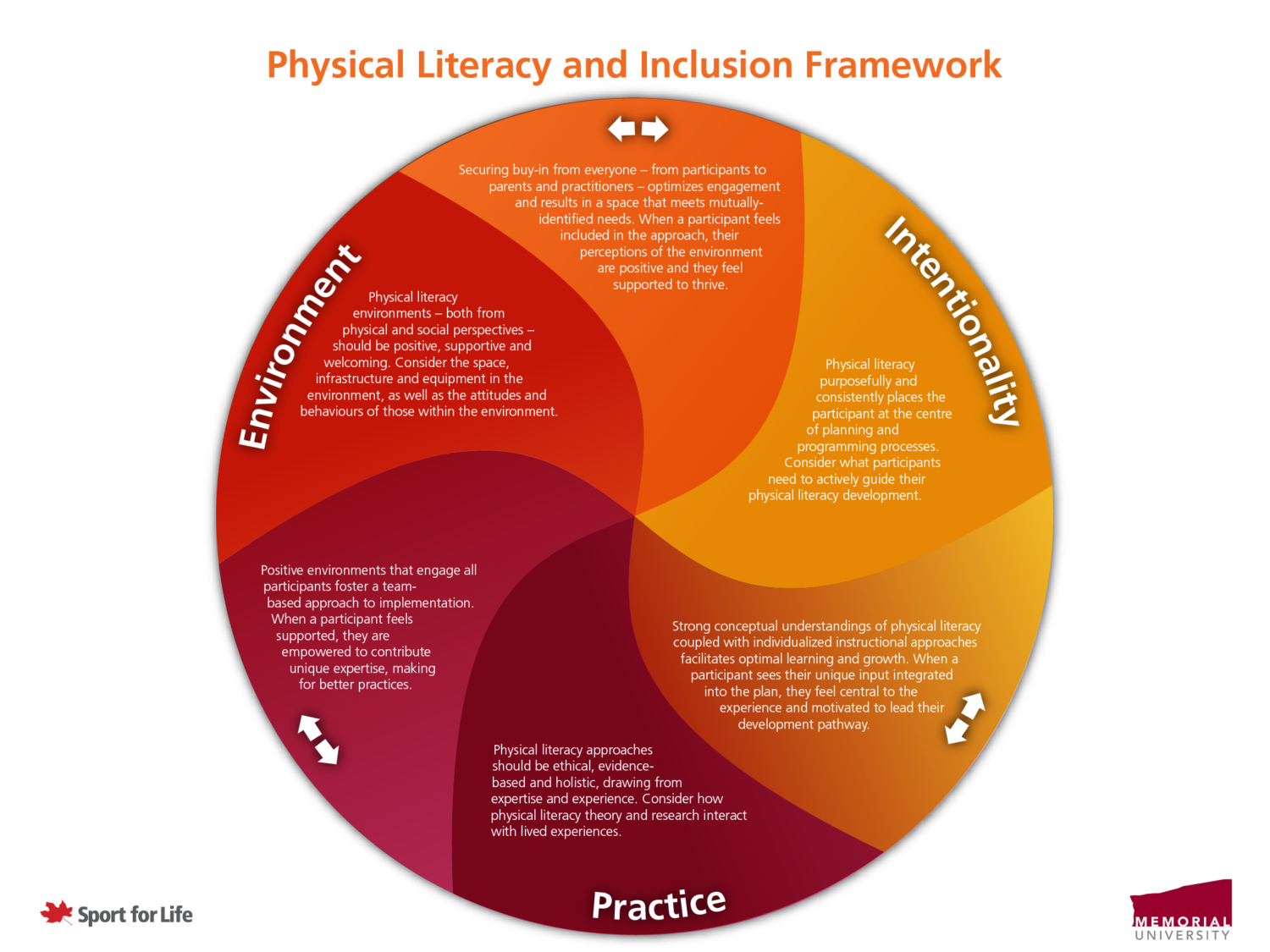Many programs have implemented physical literacy (PL) but often overlook the experiences of persons with diverse abilities due to societal, cultural, and political influences. This can lead to exclusion and marginalization from physical activities. Researchers at Memorial University have addressed this challenge by developing a PL and inclusion framework through direct observation of programming and perspectives from participants of diverse abilities, parents, practitioners, and program administrators. The framework and its three pillars of environment, practice and intentionality offer one lens to support the development of current and future inclusive physical literacy programs.

This blog series will discuss the ten evidence-based best practices for the inclusion of persons with diverse abilities in programming suggested within their research findings. From holistic design to systems of support, and everything in between, find out how to foster inclusion in your programs.
Idealization: Utilize a holistic design approach for programming, recognizing that multiple aspects contribute to quality of life.
The intentionality pillar emphasizes that physical literacy for all is fostered through a purposeful and intentional operationalized approach, where the participant is placed at the centre of the planning and/or programming process.
This requires buy-in from stakeholders (i.e., participants, parents, practitioners, and administrators) with considerations for their individual needs, coupled with a welcoming physical context to establish a sense of environmental compatibility—a holistic design approach.
Putting into practice
Jordan is a dedicated and inclusive coach who tailors training sessions to cater to individual needs. They design a program that includes variations in exercises and drills to improve participants’ physical abilities, ensuring accessibility for children with limited mobility by incorporating activities where they can choose between standing or using chairs and making the basketball court physically accessible for those using mobility aids.
Beyond physical improvement, Jordan strongly emphasizes social development and fun within the program. They foster a sense of belonging and teamwork among participants by organizing team-building activities, icebreaker games, and friendly competitions that focus on cooperation during practices. Jordan values peer interaction, ensuring that all participants, regardless of their ability level, have the opportunity to be involved and have fun.
Recognizing the importance of knowledge and understanding of the sport, Jordan provides educational resources and opportunities to enhance participants’ understanding of basketball. They host workshops and information sessions for participants and their parents or caregivers, explaining the game’s rules, strategies, the benefits of physical activity, and ideas for varying the environmental context. Jordan also provides accessible materials, such as simplified rule books, to ensure that all individuals can develop an understanding of the activities they are facilitating.
Thanks to Coach Jordan’s holistic design approach, children in the basketball program improve their basketball skills and experience personal growth, increased social interaction, and a deeper understanding of the sport. Over time, many children continue to participate in the program for the love of basketball and the holistic benefits it offers. Parents and caregivers appreciate the positive impact on their children’s development and overall quality of life. This contributes to long-term engagement in physical activity and an enhanced quality of life for all participants.
Tangible takeaways
Rather than focusing on isolated aspects, a holistic approach considers the broader context of programming. A holistic design approach to programming involves considering participants’ overall well-being and needs, addressing their physical, cognitive, emotional, and social dimensions. Here’s how such an approach could be applied surrounding programming for participants with diverse abilities:
- Inclusive Programming: The program emphasizes the inclusion of individuals from diverse backgrounds, cultures, and abilities. The program should offer various activities catering to different interests and skill levels. It should also provide options for modified activities or alternative forms of participation to accommodate various needs and abilities.
- Collaborative Partnerships: The program involves partnerships with community organizations, schools, and other relevant stakeholders. This ensures that the program benefits from diverse expertise, resources, and perspectives, promoting a more comprehensive and inclusive experience for participants.
- Participant-Centred Approach: Participants are actively involved in the program’s development and decision-making processes. Their input and feedback are valued, and their individual goals, preferences, and abilities are considered when designing activities and curricula. This participant-centred approach promotes a sense of ownership and empowerment among participants.
- Multi-Dimensional Learning: Holistic design recognizes that physical literacy involves more than physical skills. It integrates cognitive, emotional, and social development into the learning process. The program should provide opportunities for participants to develop problem-solving skills, critical thinking, emotional intelligence, teamwork, and communication skills alongside their physical abilities.
- Holistic Health and Well-being: The program should prioritize participants’ overall health and well-being. This includes promoting healthy lifestyle choices, nutrition education, stress management, and mindfulness practices. The program should aim to nurture participants’ physical, mental, and emotional well-being to support their holistic development.
- Continuous Assessment and Feedback: A holistic design approach involves continuous assessment and feedback mechanisms. Regular evaluations can help track participants’ progress, identify areas for improvement, and ensure that the program remains responsive to individual needs. Feedback loops with participants, instructors, and families can facilitate ongoing adjustments and enhancements to the program.
- Long-Term Development: Emphasize the importance of long-term development and recognize that physical literacy is a lifelong journey. The holistic design encourages long-term engagement with physical literacy. The program should strive to foster a lifelong love for physical activity, movement, and learning. It can provide resources and opportunities for participants to continue their physical literacy journey beyond the program, supporting their ongoing growth and development.
By incorporating these holistic design principles, programs can create environments where participants feel valued, supported, and empowered. It goes beyond physical skills to address individuals’ diverse needs and dimensions, promoting their overall well-being and personal growth.
This article is one of a series of posts on the Sport for Life website based on the research conducted by Drs. Kyle Pushkarenko and Jeff Crane of Memorial University. Keep an eye on our blog for information on the ten suggested best practices and ways to take action around them over the coming months.
